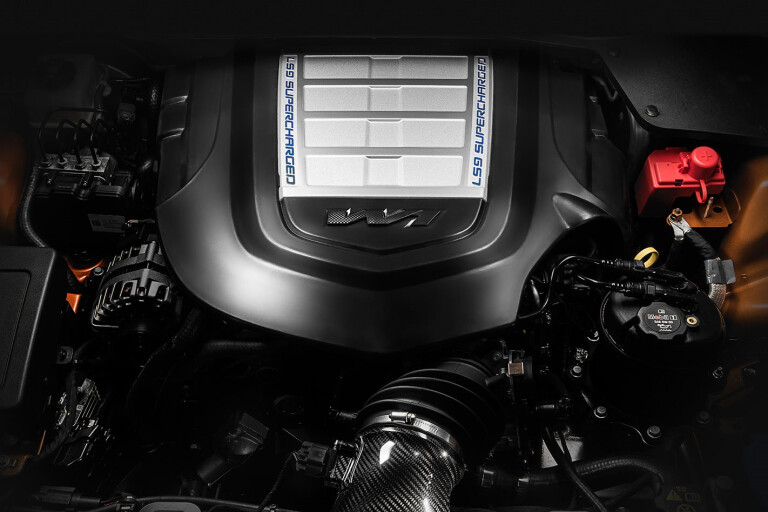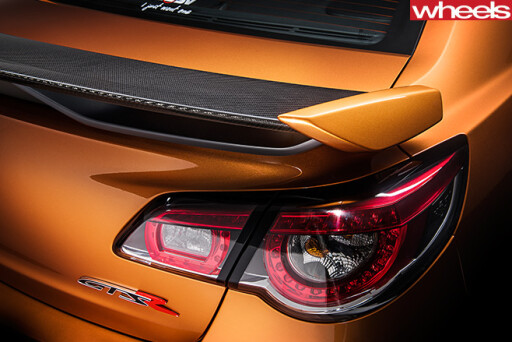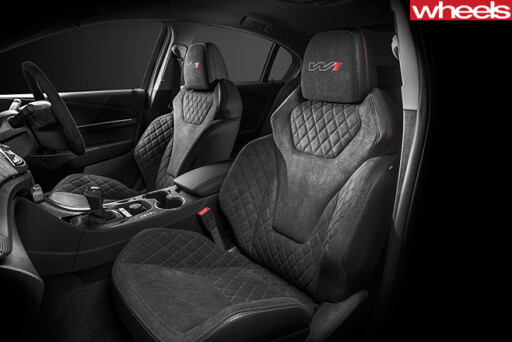
It will go down in history as the quickest and more powerful car ever produced in Australia.
With a 6.2-litre supercharged V8 the $169,990 HSV GTSR W1 produces 474kW and 815Nm, enough to propel the Commodore-based sedan to 100km/h in 4.2 seconds.
But two and half years of challenges and hurdles meant the W1 program almost didn’t make it to showrooms.
From polypropylene guards and carbon fibre components to a new engine and gearbox, the GTSR W1 was a circa-$8 million project that required significant engineering investment, the assistance of Holden and its Detroit-based parent, General Motors, as well as suppliers across the globe.
Work on HSV’s top secret GTSR W1 began in June 2014 and designers and engineers were challenged from the start.
 One of the biggest issues was getting hold of the 300 LS9 engines, including extras for service and warranty claims down the track.
One of the biggest issues was getting hold of the 300 LS9 engines, including extras for service and warranty claims down the track.
While the block and many basics are the same as the LSA used in the GTS since 2013 it has many unique features – an Eaton four-lobe supercharger, forged titanium conrods, titanium inlet valves, hollow-stemmed sodium-filled steel exhaust valves, oil jets spraying the underside of the piston – and was developed for the sixth-generation Corvette ZR1.
It’s an engine no longer produced, which sent engineering director Joel Stoddart and HSV managing director Tim Jackson on a mission to locate engines.
“We decided LS9 was the engine, it worked in [Holden Commodore’s] Zeta platform … but we actually had to secure the engines because they’d gone out of production,” said Stoddart.
“We had to make a few phone calls, spend a bit of time over in the US meeting people, got into the warehouse and we found the Holy Grail, we found these engines that they’d sort of stockpiled for the next 10 years that we convinced them to give us enough to make this program viable.”
 Once secured, the engine had to be modified to meet stricter Euro 5 emissions standards.
Once secured, the engine had to be modified to meet stricter Euro 5 emissions standards.
“Calibration certification programs can take years but with this one, we didn’t get a second swing at it, we had to get it done now because we couldn’t wait,” said Stoddart, adding that it relied on the cooperation and assistance of Holden and General Motors.
“Working with Holden and GM engineering teams to try and compress that calibration program and then certifying it for Australia.”
Then there was the issue of the substantial noise the engine produces.
“Noise drive-by was another big challenge,” said Stoddart. “It’s not only exhaust noise, you’ve got a pretty big supercharger chopping up air there, so it’s actually approaching the noise trap was a bit of a challenge as well and we’ve had to put some technology under the bonnet, some covers around the air induction system to help us there.
“Exhaust was a real challenge; we had to put some fairly decent muffling in the back-end to get it past. When it gets into those upper rev ranges it’s a great sound, we love it!”
 The next step was finding a gearbox that would deal with the immense power and torque. That was where Stoddart thought the whole W1 project could come unstuck.
The next step was finding a gearbox that would deal with the immense power and torque. That was where Stoddart thought the whole W1 project could come unstuck.
“I said a year ago ‘this could really kill the program’,” said Stoddart, reflecting on what was a turning point for the W1 project.
The obvious choice was the six-speed manual used in the Corvette, except that the Chevrolet Corvette uses a transaxle, which requires a different method to connect it to the engine.
“We got the engine and thought we’d got this program over the line and then we figured out we needed a transmission that needed over 800Nm of torque [capacity] and there was none available for the [Tremec] TR6060 in our Zeta platform.
“So we knew that the gearset was around for the Corvette but we couldn’t actually apply it on our vehicle. Corvette is a transaxle so there is no input shaft.”
GM and Holden helped out, as did the transmission manufacturer Tremec, which produced a bespoke input shaft rated at 850Nm.
The airbox also added to the engineering challenges; it needed to have a large volume but fit within the confines of the engine bay.
 A specific carbon fibre airbox was created out of necessity to suit the shape and location.
A specific carbon fibre airbox was created out of necessity to suit the shape and location.
“Some of the wall sections [of the airbox] needed to be 2.5mm thick, carbon fibre is the only material that’s going to survive in that environment,” said Stoddart. “We had no choice but to go with carbon fibre.”
Fitting that airbox in then required angling the radiator back six degrees to allow the airbox to run over the radiator, the only space that was spare.
Fitting the Corvette’s 9.93-litre dry sump system also meant a unique design to the connector.
There was also a new exhaust system, a bigger catalytic converter (up from 2.25 inches to 2.5 inches) a larger charge air intercooler (with a 50 percent bigger core) along with its dedicated water pump with a higher flow.
Fitting in the wider wheels and ensuring suitably high quality exterior finishes proved a further challenge.
 The plastic front guards were a first for HSV and meeting the quality standards expected of a six-figure-plus car has proved a challenge.
The plastic front guards were a first for HSV and meeting the quality standards expected of a six-figure-plus car has proved a challenge.
Early prototypes had a poor finish, something HSV was confident will be fixed by the time the first car rolls down the Clayton production line on April 10, 2017.
Arguably the biggest hurdle was completing the program within the timeframe.
HSV knew there was a deadline for the Commodore donor car, with plans to close the plant in late 2017 (the date has since been confirmed as October 20).
If the car wasn’t designed and engineered by then there would no longer be cars to work on.
“The end of Commodore approaching meant we didn’t have a lot of time to pull it all together, we didn’t have a second chance … we couldn’t put it back 12 months because you don’t have a car,” said Stoddart.

COMMENTS